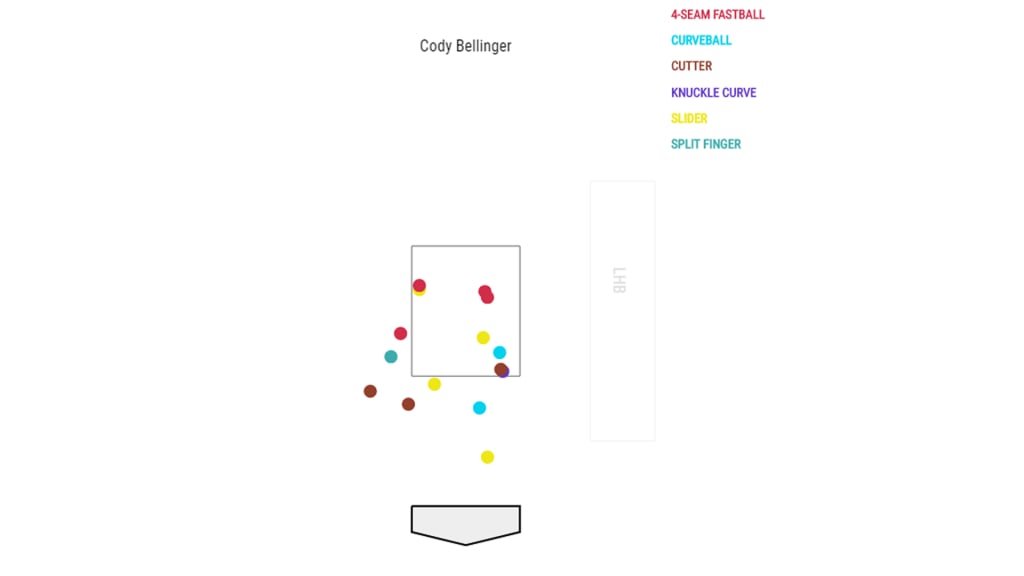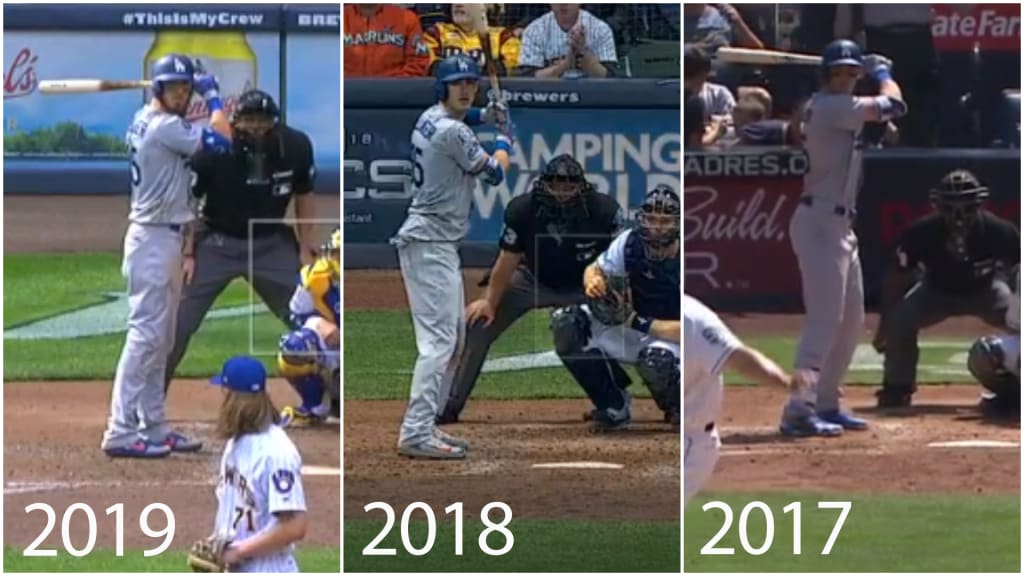Cody Bellinger was a healthy scratch in Games 1 and 2 of last year’s World Series. Six months later, he’s capped off one of the greatest starts in Major League history: An out-of-this world .431/.508/.890 slash line, and a record-tying 14 home runs before the calendar flipped to May.
Bellinger’s turnaround ranks among the young season’s best storylines, especially because he’s been at the top of the heap before, such as when he won the National League Rookie of the Year Award in 2017. In two-plus seasons, we’ve seen Bellinger go on tears like this, and we’ve also seen him look directionless at the plate -- multiple times over.
So, why is this hot stretch more encouraging than the others? Everything Bellinger’s doing this time around points toward more stability, and more proactivity. Bellinger no longer looks like a slugger swinging from his heels; instead, he looks much more like a hitter who’s made adjustments -- and is capable of making them again.
“Every day before the game I know what I want to do,” Bellinger told the Los Angeles Daily News last weekend. “If I’m not feeling good, I try to figure why I’m not, and then I try to get back to where I was.”
With help from Statcast’s pitch tracking technology, let’s dive into that. Here’s what the “new” Cody Bellinger is looking to do, and his execution that could keep him on his MVP pace.
He’s much more selective
Bellinger’s 3.4% decrease in chase swings (from 24.4% in 2018 to 21.0% in '19) ranks in the top quarter of hitters who saw at least 750 out-of-zone pitches last year, and at least 150 this year. But for Bellinger specifically, it’s more about which pitches he’s chasing less.
The book on Bellinger has been to throw him breaking balls low in the zone, and particularly ones that break toward his feet. When the Astros struck out Bellinger 17 times in the 2017 World Series, eight of them came on curveballs down and in, while another three came on sweeping sliders down and away by lefties Dallas Keuchel and Francisco Liriano. There were a lot of at-bats that ended like this:
Opposing pitchers took Houston’s lead and exposed Bellinger in those areas last year; he hit just .225 and struck out in 37.5% of his at-bats that ended on a breaker in the lower-third of the zone or below. Last October, even though Bellinger won the NL Championship Series MVP, he still finished the postseason with a .115 average, and pitchers like Wade Miley, Eduardo Rodriguez and Nathan Eovaldi went back to the well to strike out Bellinger again on similar pitches.

But Bellinger is showing new restraint in 2019. Scan the list of 220 hitters who have seen at least 50 out-of-zone breakers, and Bellinger’s chase rate is 14th-best. He’s also pulling the trigger much less on inside fastballs, meaning he’s spitting on two types of weapons that pitchers -- especially lefties -- have crowded him with in the past.
He’s bringing pitchers back to his zones
Bellinger and his manager Dave Roberts have pointed to his new stance as a major reason he’s covering more of the plate. After he went back and forth with his bat angle last year, Dodgers hitting coaches Aaron Bates, Brant Brown and Robert Van Scoyoc have adjusted Bellinger’s posture to keep his torso more upright and his hands higher up in a loading position, putting him in better position to execute emergency hacks like this one. You can see the difference when he’s up at the plate; Bellinger looks a lot like his Rookie of the Year self once again.

Spoiling “pitchers' pitches” off the plate helps a hitter extend at-bats, and the old Bellinger was decidedly poor in contacting out-of-zone deliveries in 2017 and ’18. With the new Bellinger, it’s a completely different story -- he's fouling a bunch of those pitchers' pitches off.
Biggest increases in chase foul rate, 2018 vs. '19
Min. 250 chase swings in 2018 and min. 50 in ’19 (111 hitters)
1. Rhys Hoskins: +15.1%
2. Hunter Renfroe (SD): +12.9%
3. Starlin Castro (MIA): +10.8%
4. Trey Mancini (BAL): +10.4%
5. Cody Bellinger: +10.2% (36.1% to 46.3%)
Bellinger's in a more athletic position to fight off the inside pitches that plagued him before, and he's shortened his swing to become much quicker to the baseball. Last Sunday, Bellinger fouled off a low pitch on a 3-2 count from Liriano before following up with an RBI single off a slider in the heart of the plate. On April 21, he checked away a sweeping slider from Josh Hader before crushing another hanging breaker for a game-winning home run.
Bellinger possesses one of the prettiest left-handed swings in baseball, but it’s obviously more effective when he can bat away pitches he can't damage -- and then unleash that uppercut on pitches in his wheelhouse.
“There’s discipline and power,” Pirates manager Clint Hurdle said of Bellinger after watching him up close last weekend. “He gets his swing off with as much force as anyone in the game. But there’s also an element of bat-to-ball.”
He’s found his sweet spot
Bellinger’s elite power became obvious when he knocked a rookie record 39 homers two years ago, and he added 25 more in a “down” season last year. So, as he’s eliminating his trouble pitches and hunting deliveries he can handle, he’s unlocking that sweet power stroke early and often.
Hitting the ball hard is one thing, but knocking pitches with pace and lifting them up into that most productive line drive/fly ball range (i.e. the “sweet spot,” Statcast’s designation for launch angles between eight and 32 degrees) is what separates stars from the rest of the pack. Spitting on breaking balls has helped Bellinger cut his ground-ball rate by more than 11 percent, and he’s optimizing his air balls toward his most efficient direction for power.
Pct. of Bellinger’s fly balls+line drives hit to pull side, 2017-19
2017: 36.9%
2018: 38.7%
2019: 52.3%^
^ -- 3rd-highest in MLB (min. 40 fly balls+line drives)
Pulling the ball isn’t the only factor for successful slugging, but it’s clearly a formula that’s worked for Bellinger; 25 of his 39 long balls went to right field in 2019. With a more polished approach than we’ve ever seen from Bellinger before, the Dodgers star looks like more of a 50-homer threat in Year 3.
